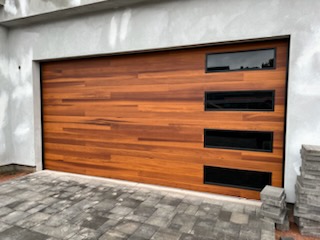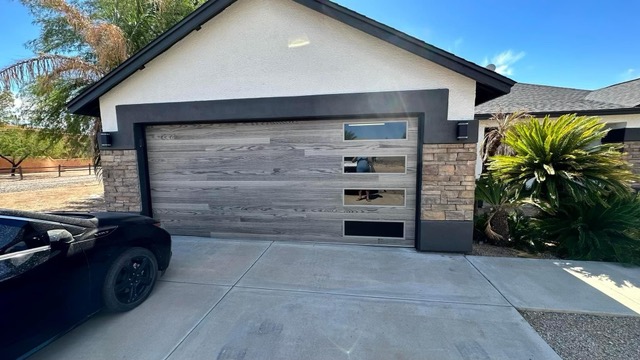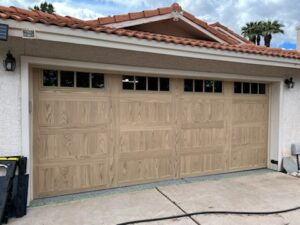 Arizona, a state known for its diverse landscapes ranging from the bustling city of Phoenix to the serene waters of Lake Havasu, requires homeowners to make wise choices in their home fixtures. One such choice is the selection of a garage door. Choosing the most durable, energy-efficient door is crucial in Arizona’s intense climate. That being said, wood garage doors emerge as an excellent option when it comes to a garage door choice. In fact, wooden garage doors are aesthetically pleasing, energy-efficient, and suitable for Arizona homes.
Arizona, a state known for its diverse landscapes ranging from the bustling city of Phoenix to the serene waters of Lake Havasu, requires homeowners to make wise choices in their home fixtures. One such choice is the selection of a garage door. Choosing the most durable, energy-efficient door is crucial in Arizona’s intense climate. That being said, wood garage doors emerge as an excellent option when it comes to a garage door choice. In fact, wooden garage doors are aesthetically pleasing, energy-efficient, and suitable for Arizona homes.
The Benefits of Wooden Garage Doors in Arizona
- Insulation Properties – Wood naturally has insulating properties, making these doors ideal for maintaining a consistent temperature inside your garage
- Durability in Dry Climates – Wooden doors are particularly resilient in Arizona’s dry climate, resisting warping and cracking
- Customization and Style – Available in various styles and colors, wooden doors offer a unique look for every home
- Eco-Friendly – Wood is a renewable resource, making these doors a more environmentally friendly choice
The Efficiency and Style Factor of Wooden Garage Doors

Wooden garage doors are not just about aesthetics; they also bring significant energy efficiency to Arizona homes. Wood, being a natural insulator, helps maintain a stable temperature within the garage. This is particularly beneficial in a climate like Arizona’s, where temperatures can soar. A stable garage temperature means less strain on your home’s HVAC system, leading to potential savings on energy bills.
Moreover, the beauty of wooden garage doors lies in their versatility. Homeowners in Arizona, whether in the urban settings of Phoenix or the lakeside areas of Lake Havasu, can choose from a myriad of styles and colors. This customization allows for a perfect blend with your home’s architectural design, enhancing curb appeal and potentially increasing property value.
The Importance of Professional Garage Door Service
 While selecting the right garage door is crucial, equally important is choosing the right service for garage door repair, installation, and maintenance. This is where Parker Garage Doors, a locally owned and family-operated company, steps in. Catering to both residential and commercial needs in the Phoenix and Lake Havasu areas, our team at Parker Garage Doors ensures that your wooden garage door is not only aesthetically pleasing but also functioning optimally.
While selecting the right garage door is crucial, equally important is choosing the right service for garage door repair, installation, and maintenance. This is where Parker Garage Doors, a locally owned and family-operated company, steps in. Catering to both residential and commercial needs in the Phoenix and Lake Havasu areas, our team at Parker Garage Doors ensures that your wooden garage door is not only aesthetically pleasing but also functioning optimally.
Why Choose Parker Garage Doors?
- Local Expertise – Understanding the specific needs of Arizona homes
- Family Operated – Personalized and trustworthy service
- Comprehensive Services – From new installations to repairs and maintenance
- Customer Satisfaction – Commitment to delivering the best service
Wooden garage doors are a smart and efficient choice for Arizona homeowners. They provide not only energy efficiency and durability but also offer an array of styles and colors to elevate your home’s appearance. Remember, the key to maximizing the benefits of your wooden garage door lies in working with a trusted service provider like Parker Garage Doors, who can ensure that your investment is well-maintained and serves you for years to come. With our expertise and commitment to customer satisfaction, Parker Garage Doors is your go-to for all your garage door needs in the Phoenix and Lake Havasu areas.
